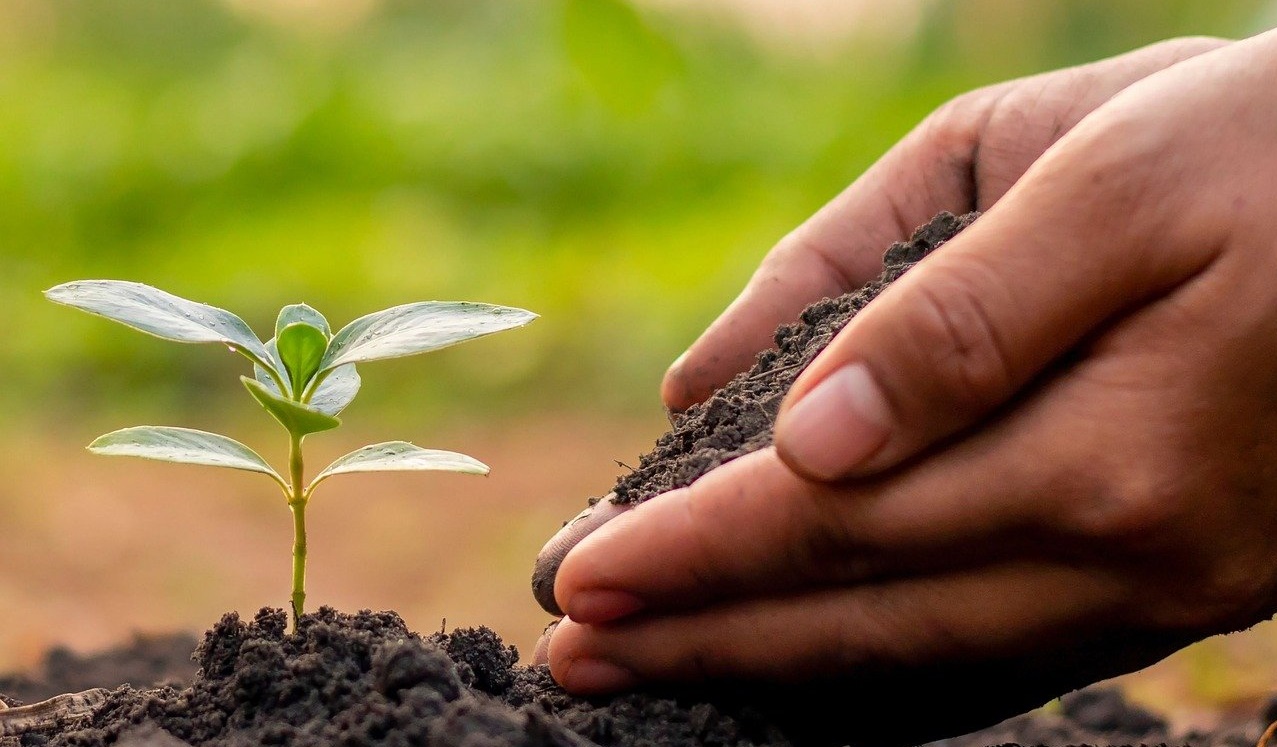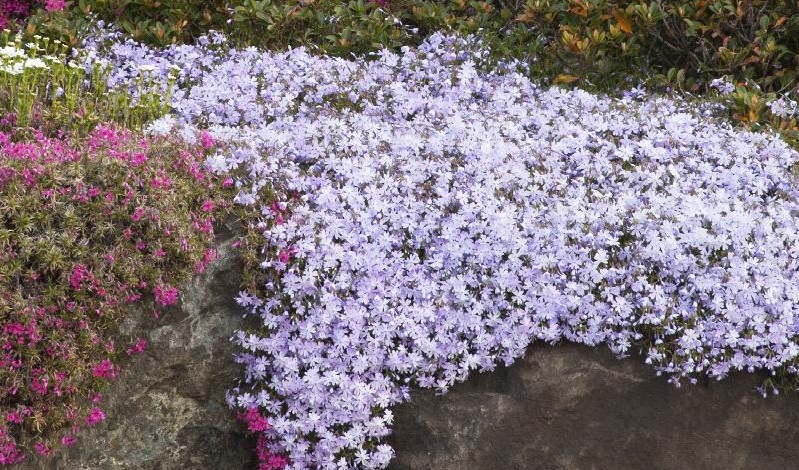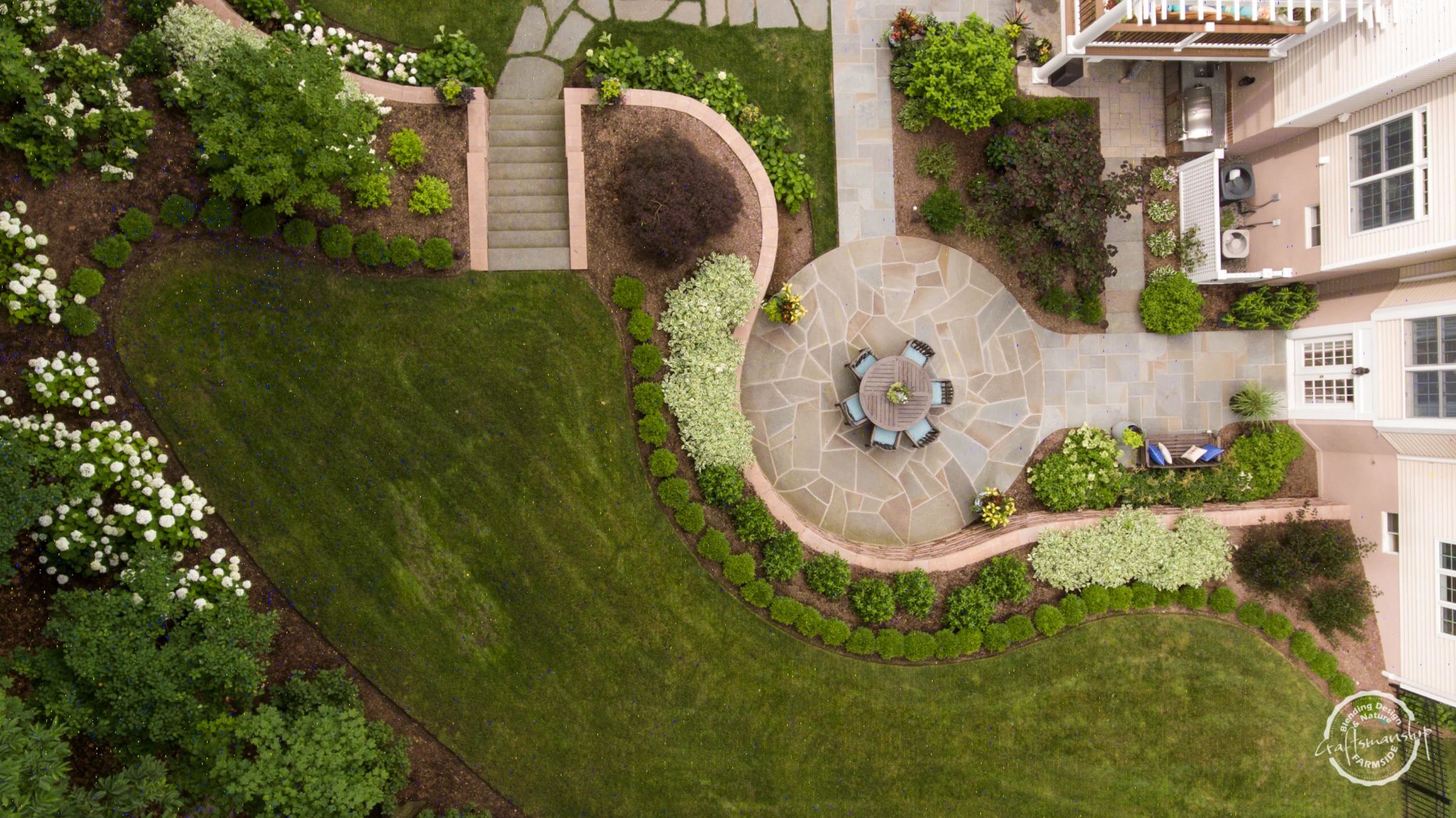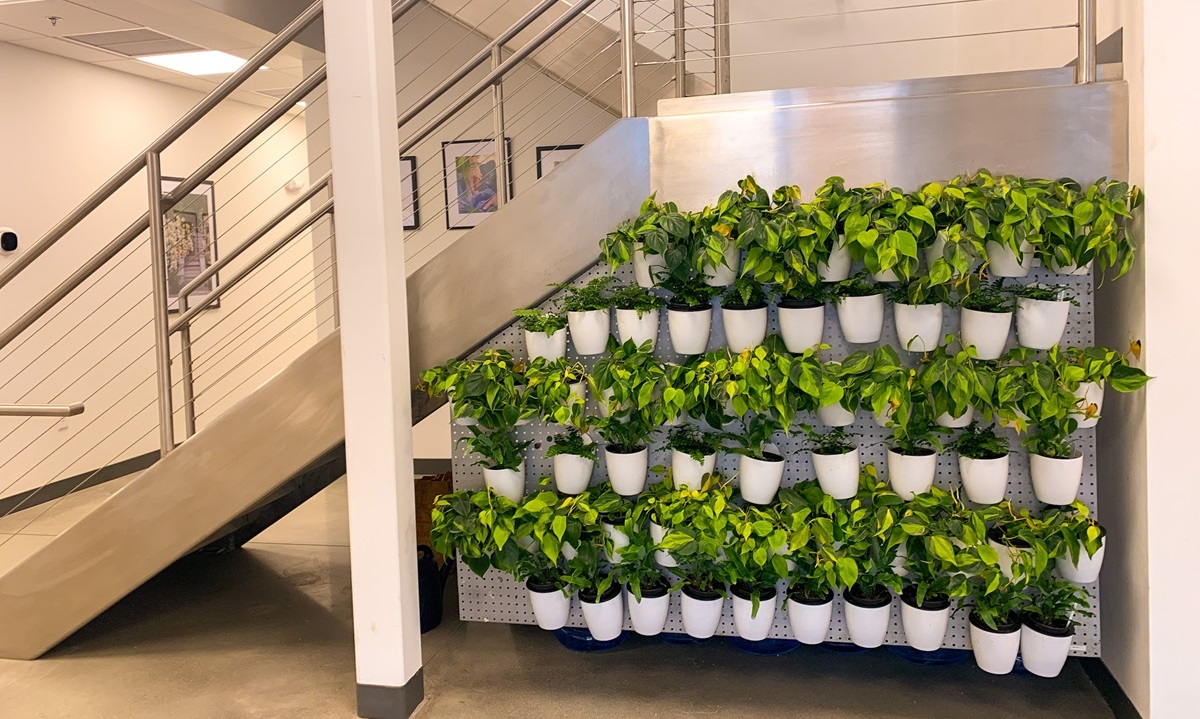Spring is here, and as we prepare to get back out into the garden, one of the best ways to ensure a successful growing season starts with good soil health. But what is healthy soil? How can we determine soil health? And what can we do to preserve it or improve it?
Some facts about soil:
- Soil is an organized ecosystem that contains microbes like fungi, bacteria, viruses, protozoa plus organisms like insects and worms that are essential for plants to exist.
- Soil is composed of organic matter, mineral fragments, water and air. Healthy soil is defined as loose, friable and well-drained, and is made of approximately 45% minerals, 25% water, 25% air and 5% organic matter.
- Soil is a living thing, and its health is defined by its ability to function as a living ecosystem that sustains plants, animals and humans.
- Dirt, on the other hand, is comprised of broken-down rock, sand, clay and silt, and is void of significant microbes and live matter. Plants cannot survive in dirt. They need the viable ecosystem of soil to thrive. While soil contains dirt as part of its makeup, dirt does not contain soil.
- Healthy soil not only improves crop yields, but it also improves crop flavor and nutrient value. It is essential for diversity in plant and wildlife, as well as for clean air and water.
Understanding Soil Health
Healthy soil is essential for the wellbeing of our lives and our planet. Not only does healthy soil support plant, animal and human life, it supports our environment by filtering and purifying our water, helps to reduce flooding and soil erosion, regulates the atmosphere, plays a crucial role in driving the carbon and nitrogen cycles, and helps mitigate the effects of climate change by storing vast amounts of carbon.
Like us, plants need a variety of nutrients for optimum health. There are 17 essential nutrients all plants need to grow: hydrogen, oxygen, carbon, nitrogen, phosphorus, potassium, calcium, magnesium, sulfur, chloride, iron, boron, manganese, zinc, copper, molybdenum and nickel. Micronutrients such as iron, manganese, molybdenum, chlorine, boron, copper, and zinc are needed in smaller quantities.
Soil bacteria produce natural antibiotics that help plants resist disease. Fungi assist plants in absorbing water and nutrients. Together, these bacteria and fungi are known as “organic matter.” The more organic matter in the soil, the healthier that soil is.
CEC (Cation-Exchange-Capacity) in Soil
Cation exchange capacity (CEC) is a fundamental soil property used to predict plant nutrient availability and retention in the soil. It’s a useful indicator of soil fertility because it shows the soil’s ability to supply plants with three important nutrients: calcium, magnesium and potassium. The primary factors that influence this capacity are the soil’s clay content, organic matter content, and pH level.
CEC Levels
Clay has fine-textured, small soil particles, which means it has more soil particle surface area to hold onto nutrients, so it typically has a high CEC – an indicator of fertile soil. Although clay soils are often rich in nutrients, they can lack porosity or air space, which is essential in transferring the nutrients in the soil to the plants.
Sandy soils, on the other hand, are very porous, but can also easily leach soil nutrients, so their CEC is often low. The range of CEC in most soils goes from around 50 in high clay content soils to 1 in pure sand. Soil pH levels can also affect CEC levels. The more alkaline a soil is, the higher the CEC. While there is no “ideal” CEC level, soils with levels between 12-25 are healthy for most plant life. Adding organic matter is the best way to increase CEC soil levels.
Effects of CEC Levels
A soil’s CEC affects fertilization and liming practices. For example, lower CEC soils may require more frequent fertilization due to their tendency to leach nutrients. Conversely, high-CEC soils generally do not need to be limed as frequently as low-CEC soils but may need higher lime rates to reach optimum pH. CEC can also influence when and how often nitrogen and potassium fertilizers can be applied.
Soil PH
Soil acidity or alkalinity is measured in pH, ranging from 0 to 14. A pH of 7 is neutral. As numbers decrease from 7, acidity increases. As numbers increase from 7, alkalinity increases. Most soils range from an extremely acidic pH of 3 to a very alkaline pH of 10. This range is a result of many factors, including location and the amount of yearly rainfall.
Healthy pH Levels for Soils
Most cultivated plants enjoy slightly acidic conditions with a soil pH of about 6.5, which affords them access to a wide range of nutrients. Soil pH also influences soil-dwelling organisms that contribute to soil health. The slightly acidic conditions enjoyed by most plants are also what earthworms like, as do microorganisms that convert nitrogen into forms that plants can use. Soils that have too high or too low of pH levels can make nutrients and naturally occurring minerals available at toxic levels for plants.
Adjusting pH Levels
Limestone is used to raise a pH level, while sulfur is used to lower it. Dolomitic limestone is a mix of calcium carbonate (limestone) and magnesium. Dolomitic limestone neutralizes more acidity than pure limestone and adds magnesium to the soil, which is ideal for our area, where this nutrient is naturally low.
It’s a good garden practice to test your soil’s pH regularly, since factors such as rainfall and fertilization can affect levels over time.
How Can You Gauge Soil Health?
Healthy soil is dark and well-aerated, with a friable texture (easily breaking into stable aggregates of smaller size), has good water retention and drainage, and is teeming with bacteria, fungi, algae, protozoa and nematodes. It contains an abundance of minerals and nutrients that feed plants and in turn help produce crops with higher nutrient value and even better taste. Here are some ways to determine soil health:
Soil Tests – A soil test is a quick and accurate method to determine your soil’s relative acidity (pH), CEC, and the level of several essential nutrients – phosphorus, potassium, calcium, magnesium, sodium, sulfur, manganese, copper, and zinc. You can purchase a soil test from your county Cooperative Extension office.
Soil Activity – Soil that contains a dense population of bugs (ground beetles, spiders, centipedes, etc.) and worms is indicative of good health. These critters help control damaging pests and disease. You can get a quick gauge of soil health by digging a hole 6 inches deep and observing the activity in it for 4 minutes. Healthy soil should have from 3-5 worms and at least 10 insects/worms in total.
Root Health – Healthy soil is essential for good root development, so healthy root systems are an indicator of well-aerated, healthy soil. Dig up a weed at its root level and look at its roots. White roots with fine strands are healthy, while brown, mushy roots are a sign of drainage issues. Short, stunted roots can mean disease or root-eating pests.
Optimizing Soil Health
Rich in organic matter, covered with plant life or mulch, and protected from soil compaction and disturbance – these are key elements in optimizing soil health.
Organic Matter – Soil rich in organic matter improves soil’s physical properties such as air and water availability, allowing for healthy root growth. Organic matter is composed of living plant roots and organisms, decomposing plant and animal residue in varying stages of decay, and enzymes secreted by soil organisms that act like glue to bind soil particles.
As soil organisms like fungi and bacteria break down plant and animal parts, nutrients become available to plants. The plants, in turn, feed the soil organism with their remains.
Soil Covers – Bare soil is vulnerable to erosion from rain and wind, causing soil health to deteriorate. Soil erosion decreases soil fertility, and sends soil-laden water downstream, which can create heavy layers of sediment that prevent streams and rivers from flowing smoothly and can eventually lead to flooding.
Raindrops landing on bare soil can splash soil particles several feet into the air, dispersing them – along with soil-borne pathogens – onto leaves and stems, impacting plant health. Plant-based soil covers such as groundcovers and cover crops help protect the soil while adding important nutrients and microbial activity. Mulch is also a soil covering option that, (like ground covers and cover crops) adds rich organic matter as it decomposes. Mulch and cover crops conserve soil moisture, minimize weeds, and reduce plant stress by moderating soil temperatures.
Soil Compaction and Tilling – Tilling or overworking the soil can result in soil compaction and disturbing the delicate balance of the soil’s microenvironments, making it hard for plant roots to penetrate the soil, absorb water and nutrients, and interact with beneficial microbes. No-till and crop cover practices help increase the soil’s carbon content, boost biological activity, improve nutrient cycling, soil structure and water availability. Disturbing soil also disturbs weed seeds, exposing them to light and increasing germination—resulting in more weeds!
Here are some other ideas to minimize soil compaction:
- Create walking paths around planting beds to avoid compacting soil. Make sure the beds are accessible from all sides and are no wider than 4’ across so you can reach the center from any side.
- Incorporate raised planting beds in your landscape design.
- Use hand tools when preparing garden beds to minimize soil disturbance and avoid tilling.
Organic Practices for Soil Health
- Choose native and disease-resistant plant varieties for your location.
- Consider alternatives to pesticides and/or low-impact pesticides like horticultural oils, insecticidal soap, Spinosad, and Bt (Bacillus thurgiensis).
- Knock insects off plants with a blast of water from the garden hose or remove larger bugs (like Japanese beetles) by hand. Drop them into soapy water to kill them.
- Use physical barriers like fencing, plant covers, netting and chicken wire to protect plants, veggies and fruits from critters.
- Sometimes plant damage from insects or fungus can be just unsightly, not life-threatening to the plant. Check with your local garden center, favorite plant app, county Extension office (or us!) to assess and determine next (if any) steps to take.
- Compost helps increase the soil’s CEC, improves soil structure, and adds nitrogen, phosphorus and potassium. It’s best applied in the fall.
- Fertilizers provide missing nutrients to the soil. They’re best applied in the spring, when plants are in their peak growing cycle.
For information about available soil services from Farmside, click here.










